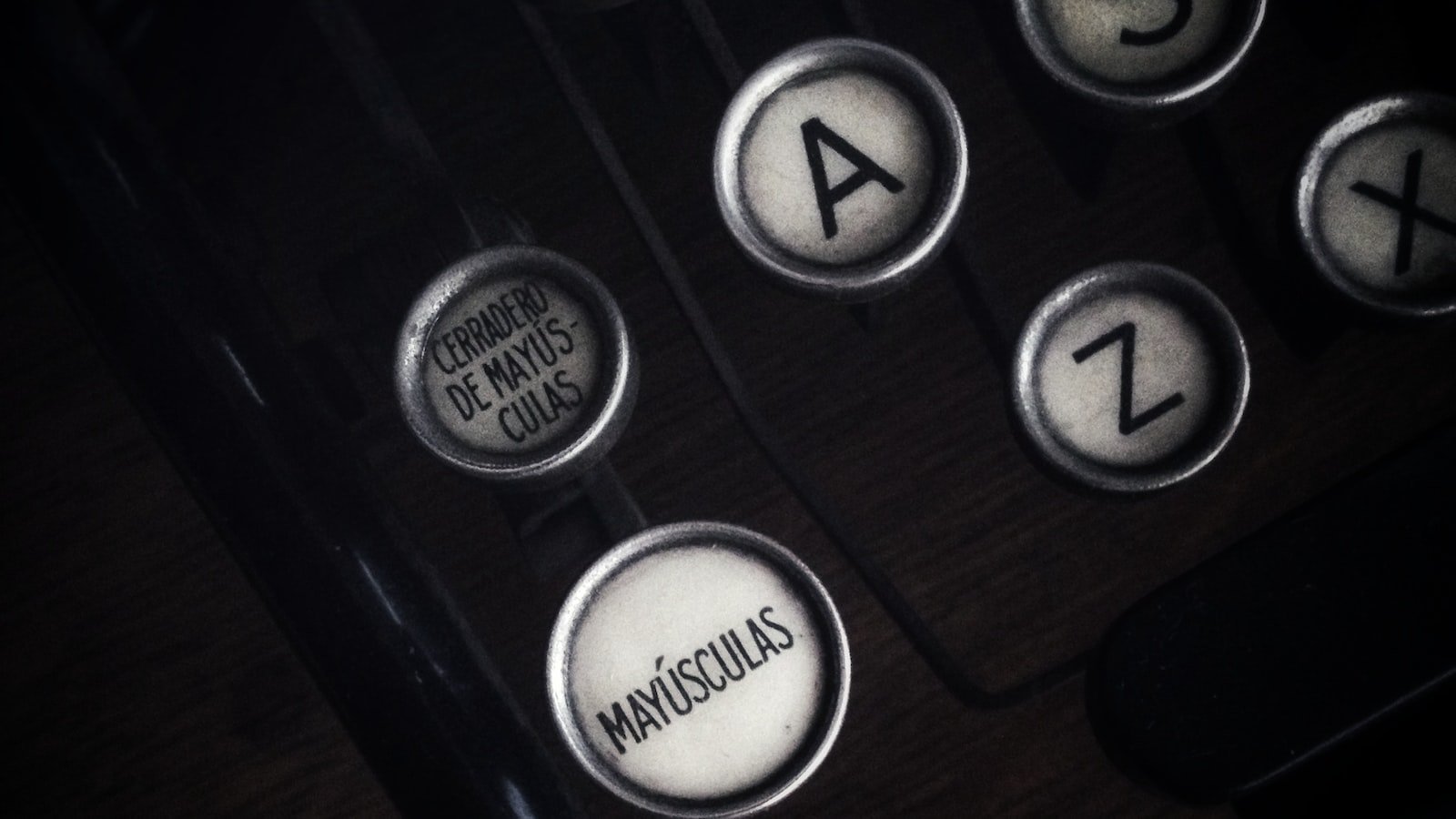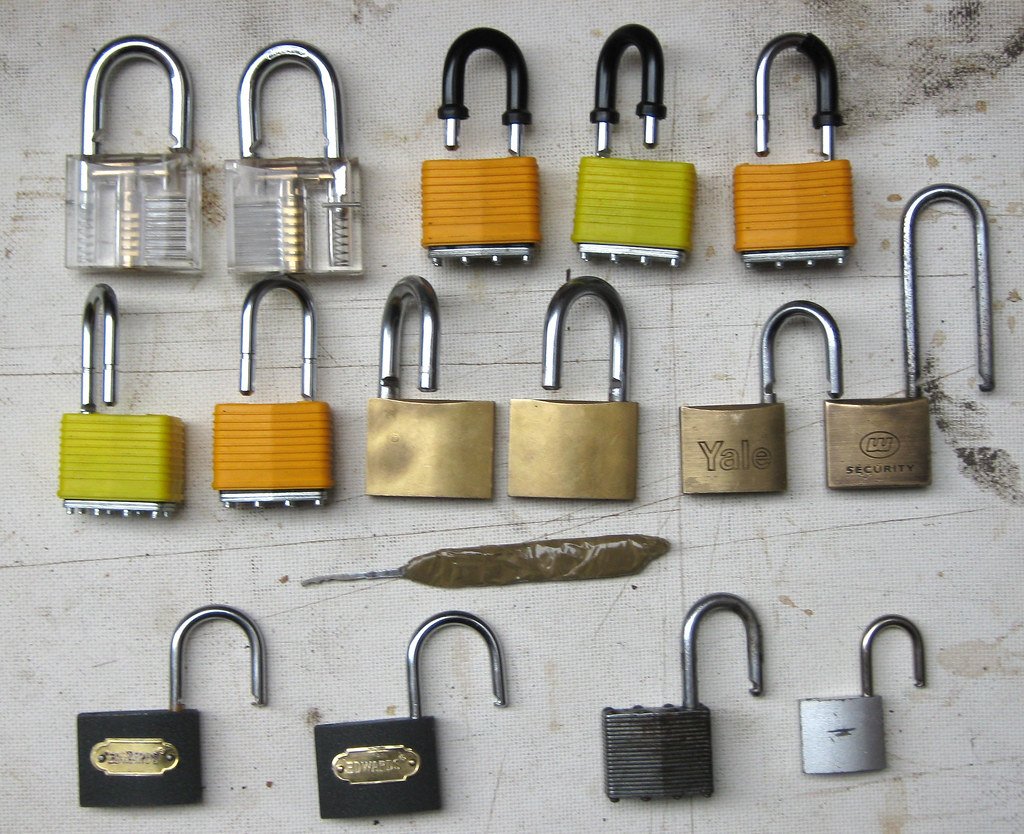Lock mechanisms have long been regarded as one of humankind’s greatest inventions, a cornerstone of security and safeguarding valuables. Hidden behind their seemingly impenetrable façades lies a labyrinth of intricate components, each bearing vital importance. While the tumblers, springs, and levers have long been held in high regard, an unsung hero in the world of locks quietly takes center stage: the key bitting. Often overlooked, yet indispensable, the role of key bitting is nothing short of remarkable. In this article, we delve deep into the harmonious dance between key bitting and lock mechanisms, uncovering its secrets and shedding light on its undeniable significance. So, prepare to embark on a journey where we unravel the enigmatic world of key bitting, where every cut tells a story, and where security meets ingenuity.
Table of Contents
- Understanding the Key Bitting: An Essential Component in Lock Mechanisms
- Unveiling the Intricacies of Key Bitting Design: A Closer Look at Pin Arrangement
- Optimizing Security: Key Bitting Patterns and their Impact on Lock Strength
- Mastering Key Bitting: Tips and Recommendations for Enhanced Lock Efficiency
- Q&A
- Future Outlook

Understanding the Key Bitting: An Essential Component in Lock Mechanisms
When it comes to lock mechanisms, the key bitting plays a crucial role in ensuring security and smooth operation. It refers to the unique pattern of cuts within a key that matches the pins inside a lock cylinder.
Why is Key Bitting Important?
- The key bitting determines the level of security provided by a lock. A complex and well-designed bitting pattern makes it more challenging for unauthorized individuals to pick the lock.
- It allows for key control, ensuring that only authorized individuals can duplicate keys. By having specific bitting patterns unique to each lock, key duplication is restricted, preventing potential security breaches.
- Proper key bitting enhances the convenience of using a lock. When the cuts on a key align perfectly with the pins inside the lock cylinder, it allows for a smooth and effortless turning motion, providing a satisfying user experience.
Types of Key Bitting Systems:
- Mechanical key bitting: This traditional system involves physical cuts on the key corresponding to the pins inside the lock cylinder. It relies on precision and proper alignment for effective operation.
- Electronic key bitting: In modern electronic locks, the key bitting is digital and stored on a microchip embedded within the key. This technology allows for more advanced features like remote access and audit logs.
- Master key systems: These systems utilize complex key bitting patterns to provide access to multiple locks with a single master key. They are commonly used in large organizations or buildings with multiple secure areas.
In conclusion, understanding the key bitting is imperative for anyone involved in lock mechanisms. It significantly impacts the security, control, and user experience provided by a lock. Whether it’s the traditional mechanical or the cutting-edge electronic systems, a well-designed key bitting pattern is the cornerstone of effective and reliable lock functionality.

Unveiling the Intricacies of Key Bitting Design: A Closer Look at Pin Arrangement
Unlocking the mysteries of key bitting design is like peering into a hidden world of fascinating precision and intricacy. We invite you to take a closer look at the mesmerizing artistry behind the pin arrangement – the unsung hero that determines the uniqueness and security of your key.
The pin arrangement in a lock cylinder may appear deceptively simple at first glance, but a deeper understanding reveals a symphony of painstaking details. Each pin, carefully calibrated to a specific height and width, interacts harmoniously with its counterparts to produce the perfect blend of individuality and functionality. It is this delicate interplay between pins that ensures both the smooth operation of the key and the lock’s robust security.
Let’s delve into the key bitting design and explore some of the remarkable features that make it an engineering marvel:
- Varying Pin Heights: To create the intricate puzzle that is a lock, pins come in different heights corresponding to the depths of the key cuts. This diversity allows for unlimited combinations and complex keying systems, ensuring each key is truly one-of-a-kind.
- Precision Alignment: While seemingly minute, the alignment of each pin is crucial to the successful operation of a key. Even the slightest deviation can cause the key to jam or the lock to malfunction. Hence, master locksmiths meticulously inspect and calibrate each pin, ensuring absolute precision in pin arrangement.
- Pinning Patterns: The arrangement of pins within a lock cylinder follows specific patterns. These patterns can be customized to enhance security further. From alternating pinning to master key systems, the design possibilities are endless, rendering the lock impervious to unauthorized access.
Next time you hold a key in your hand, take a moment to appreciate the complexity embedded within its seemingly simple structure. The pin arrangement design truly demonstrates the craftsmanship and intellectual prowess of locksmiths, making each lock and key pair an extraordinary piece of art.

Optimizing Security: Key Bitting Patterns and their Impact on Lock Strength
When it comes to optimizing security, one crucial element to consider is key bitting patterns. These patterns play a significant role in determining the strength of a lock and its ability to resist picking or manipulation. Understanding the impact of various bitting patterns can help locksmiths and security professionals create stronger, more resistant lock systems.
Key bitting patterns refer to the specific arrangement of cuts (or “bittings”) made on a key’s blade. These cuts correspond to the pins inside a lock’s cylinder, and when aligned correctly, they allow the lock to be opened. However, the specific arrangement and distribution of these cuts can greatly affect a lock’s security.
There are several key bitting patterns commonly used in locks, each with its own strengths and weaknesses:
- Uniform Distribution: In this pattern, the cuts on the key blade are evenly spaced apart. While this may seem like an effective way to enhance security, uniform distribution can actually make the lock more susceptible to picking due to the ease of feeling for the individual pins.
- Varying Depths: A pattern with varying depths involves cuts that are not evenly spaced apart but rather have different depths. This can make picking more challenging as the lock picker must navigate through a combination of shallow and deep cuts to align the pins correctly.
- High and Low Cuts: This pattern incorporates both high and low cuts on the key blade. The alternating heights make it more difficult for potential intruders to pick the lock as they need to manage both shallow and deep cuts simultaneously.
By considering these different key bitting patterns, lock manufacturers can design systems that offer greater resistance to unauthorized access. Additionally, locksmiths can utilize this knowledge to create custom keying systems tailored to their clients’ specific security requirements.
Mastering Key Bitting: Tips and Recommendations for Enhanced Lock Efficiency
Lock efficiency is essential for maintaining security, making it crucial to understand the art of key bitting. Key bitting refers to the positioning and height of each cut on a key, ultimately determining its effectiveness in unlocking a lock. To help you maximize the efficiency of your locks, here are some valuable tips and recommendations:
1. Precision is Key
When it comes to key bitting, precision is of utmost importance. Even the slightest variation in cut depth can impact the key’s performance. Take your time and invest in quality locksmithing tools to achieve accurate and consistent key bitting.
2. Define the Purpose
Before diving into key bitting, it’s essential to define the purpose of the lock. Different types of locks may require varying degrees of complexity in their key bitting. For high-security systems, consider implementing complex, multi-level bittings to enhance protection against unauthorized access.
3. Embrace Varied Depths
Incorporating a range of cut depths in your key bitting can improve lock efficiency. Varied depths make it more challenging for unauthorized individuals to decipher the key’s pattern, enhancing security. Experiment with different depths while maintaining smooth transitions between cuts for optimal functioning.
By carefully mastering the art of key bitting, you can significantly enhance the efficiency of your locks and establish a stronger security system. Remember, practice and attention to detail are key factors in achieving successful key bitting outcomes.
Q&A
What is key bitting?
Key bitting refers to the unique pattern of cuts or grooves on a key, which correspond to the specific pin heights inside a lock. It essentially determines how the key will interact with the lock’s mechanism, allowing it to operate smoothly and unlock the door.
How does key bitting affect lock security?
The complexity and randomness of the key bitting greatly influence the level of security provided by a lock. A lock with a more intricate bitting pattern makes it more challenging for an unauthorized person to replicate the key or manipulate the lock, thus enhancing its overall security.
What are the different types of key bitting systems?
There are primarily two types of key bitting systems: single bitted and double bitted. In a single bitted system, only one side of the key has cuts that correspond to the pin heights. Double bitted systems have cuts on both sides of the key, providing an added layer of security by increasing the complexity of the bitting pattern.
How does key bitting impact key control?
Key bitting plays a crucial role in key control as it allows locksmiths and key manufacturers to keep records of the bitting patterns associated with specific locks. This helps ensure that only authorized individuals can duplicate keys or request replacements, preventing unauthorized access to protected areas.
What techniques are used to determine key bitting?
Locksmiths employ various techniques to identify and determine key bitting, including visual inspection, impressioning, and decoding. Visual inspection involves examining the key under magnification to decipher its bitting pattern. Impressioning involves creating a temporary impression of the key’s cuts by inserting it into a blank lock. Decoding, on the other hand, involves using specialized tools to measure the key’s cuts.
Can key bitting be manipulated for illegal purposes?
While key bitting manipulation is technically possible, it is highly unethical and illegal. Unauthorized modification of key bitting to gain access to locked areas is considered breaking and entering. Such actions may result in severe legal consequences and should be strictly avoided.
Future Outlook
As we conclude our exploration into the captivating world of lock mechanisms, we can’t help but marvel at the unassuming hero that weaves its magic behind the scenes: key bitting. While often overshadowed by its more glamorous counterparts, key bitting plays an irreplaceable role in securing our homes, offices, and treasured belongings.
Through the intricate dance of pin and tumbler, key bitting unlocks a symphony of secrets, unveiling the hidden mechanics that keep us safe. Every groove, ridge, and notch embraces its unique purpose, whispering tales of security and precision.
Venturing deeper, we have unearthed the symphony of mathematics embedded within the art of creating key bitting. The delicate balance between too much or too little depth, the symmetrical symphony of pin heights, and the divine alignment of springs and drivers – all working harmoniously to fashion an intricate defense against intruders.
Behind the curtain of a lock’s outer shell lies a world where key bitting reigns supreme, weaving together a breathtaking narrative of security. Each lock offers its own challenge, an invitation to the key bitters to craft a bespoke key that will dance effortlessly along the delicate landscape of pins, unlocking the gateway to one’s sanctuary.
While we may only glimpse the key bitting when we insert a key into a lock, it is a silent testament to the tireless craftsmanship that goes unnoticed. The key bitting is the unsung conductor, orchestrating a delicate ballet that upholds our sense of security, ensuring that only the chosen keyholder can gain access.
So, next time you find yourself unlocking a door or securing a precious belonging, take a moment to appreciate the unsung hero lurking within. The key bitting, with its precision and finesse, dutifully guards our most intimate spaces, allowing us to rest assured that our possessions remain safe and sound.
As we bid farewell to the enchanting realm of lock mechanisms, we leave with a renewed sense of gratitude for the intricate beauty concealed within a key’s humble grooves. The key bitting, a silent guardian, continues to play its part, forever weaving its spell in the delicate tapestry of security that blankets our lives.
As an affiliate, my content may feature links to products I personally use and recommend. By taking action, like subscribing or making a purchase, you’ll be supporting my work and fueling my taco cravings at the same time. Win-win, right?
Want to read more? Check out our Affiliate Disclosure page.